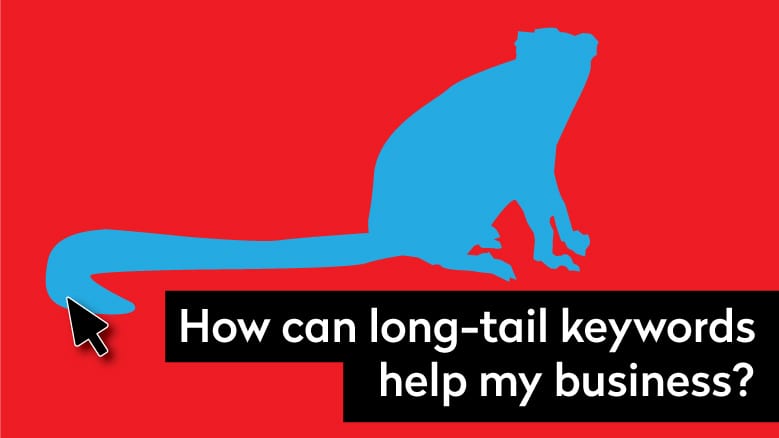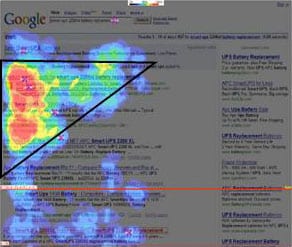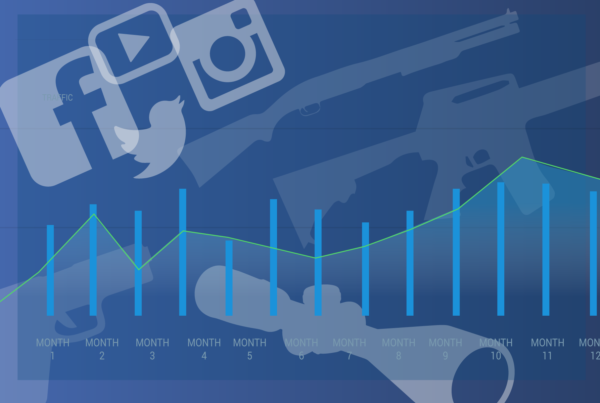
Did you know that if your website ranks within the top three listings on Google—your chances of getting clicked on is 6 times higher? Google refers to this as the golden triangle. See below.
For small business owners or start-ups trying to find a cost-effective marketing solution to generate revenue, attaining top 3 rankings on Google could mean the difference between stagnant or explosive growth.
Google controls almost 68% of all web search traffic (87% mobile) — Google now processes over 40,000 search queries every second on average which translates to over 3.5 billion searches per day and 1.2 trillion searches per year worldwide. (Source: Internet Live)
Bing is second with 18.7% and Yahoo third with 10%. (Source: Search Engine Land).
If you’re website ranks in the 4th-10th position or is listed on the second page—your chances of being found drops considerably.
So how does one make it into the golden triangle?
Well luckily, due to changing consumer behavior—93% of all B2B and 83% of all B2C purchases begin with an online search (Source: Business 2 Community). Most of these queries are in the form of a question that contains more than one keyword.
What is a keyword?
Keywords consist of concise phrases that are one to three words long. Keywords can be anything that describes what you do: category, service, product, brand, location or person.
Here are some example keywords with their estimated monthly search volume:
- graphic design (74,000)
- realtor (70,000)
- weight loss (1,500,000)
- swimming pool (49,500)
- brand development (1,000)
- cars (1,500,000)
The terms above are highly trafficked and extremely difficult to rank for.
Keywords should always be placed in the title of your website and sprinkled into the copy of your content—but only if it makes sense. Write copy for people, not search engines.
What makes keywords difficult to rank for?
Keywords with a difficulty of 60 or higher (on a scale of 1-100) are highly competitive because there are hundreds or even thousands of competitors in one given category. The more companies fighting for the same keyword, the harder it is to rank.
What is a long-tail keyword?
Long-tail keywords are more conducive of today’s user behavior and easier to rank for. After all, if you have a question—whom do you ask? Today, a rising majority of people turn to Google.
Long-tail keywords add more keywords to the base phrase and are typically created by stating a question. So using our terms above, this is how long-tail keywords look:
- Denver graphic designer
- Single family home realtor Carmel, Indiana?
- What is the best weight loss program for 40 year olds?
- How to install a fiber-glass in-ground swimming pool?
- Denver brand development consultant
- Who makes the fastest cars?
As you can see, by adding 2-3 more keywords (adjectives, nouns or verbs), to your string—you can potentially move your web pages, blogs or landing pages higher up in search engine results.
How to choose the right keywords?
Relevance is key in choosing keywords. Make sure when choosing your keywords you select the ones that most closely describe your product or service. Another method that should be considered is adding a location. By adding a location like Denver or Indianapolis, you concentrate your results to a specific geographic location. This can align your search engine rankings to local competitors and bypass national or global competitors which tend to be harder to rank against.
Here are a few tools to help you choose the right keywords:
![]() Wordtracker
Wordtracker
The best place to start with understanding what keywords you should go for is Wordtracker. Wordtracker gives you the ability to start with a seed keyword that in turn gives you results based on that term. It will also provide search volume and competition. So for example, if I search for “types of lemurs.” See right.
HubSpot
HubSpot’s keyword tool displays the same information as Wordtracker, but is much easier to use. We use HubSpot for all of our keyword research and analysis. It allows us to track our keyword progress as keywords climb in rankings and allow us to see what our competitors are up to. It also shows us other keyword opportunities that may exist.
The concepts of keywords are fairly easy to grasp, but knowing where to start is the first step.
With a little understanding of how long-tail keywords work, you can begin attracting visitors to your web pages–even in highly competitive categories.
So how do I use long tail keywords?
It all starts with a blog. If you’re not consistently updating your blog on a regular basis, and are competing for competitive keywords, it’s going to be very difficult to rank. You may try Pay Per Click—which is paid advertising on Google—but chances are those keywords will be very expensive.
How do I track progress?
There are several free tools out there to help you track your keyword’s progress. Google Analytics is a free service you can install on your website. A paid version we recommend is Counter Central. Google and other search engines typically crawl your website once a month looking for updates. Recently, its been noted that this is done on a weekly basis. Check back once a week and record your progress. Here are some additional tips to speed up your crawl rate.
To get started with long-tail keywords and blogging, check out the free resource below. Good luck!






